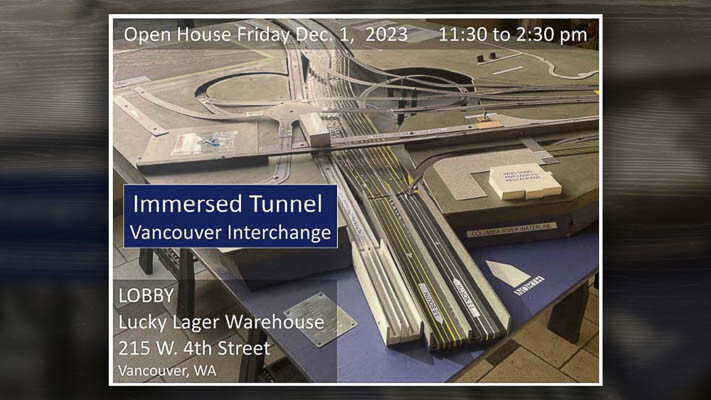
Coalition gathers to view cost effective alternative for river crossing
John Ley
for Clark County Today
In the shadow of where a replacement Interstate Bridge would tower about 50 feet above a local business, an Open House was held Friday. “See the model that exposes the IBR team’s ‘No Tunnel Connections’ lie,” a flier advertised.
Bob Wallis and Dave Rowe have collaborated to show something deemed impossible is actually very possible for a crossing of the Columbia River. Wallis, a retired engineer, provided the numbers and Rowe created a scaled model of an immersed tube tunnel showing what it would look like on the Vancouver side of the river. It took Rowe over three months to build the model.
“The DOTs continue to lie to the public about the feasibility of the tunnel connections,” said another retired engineer, Bob Ortblad. “The DOTs (WSDOT and ODOT) falsely concluded that the tunnel option evaluated during the initial screening of alternatives for the IBR project could not provide connections between I-5, local downtown Vancouver streets, and SR-14. That led to the rejection of the tunnel alternative in favor of the current proposal — a giant 200-foot-wide mega bridge, towering 100 feet above Vancouver’s historic waterfront.”
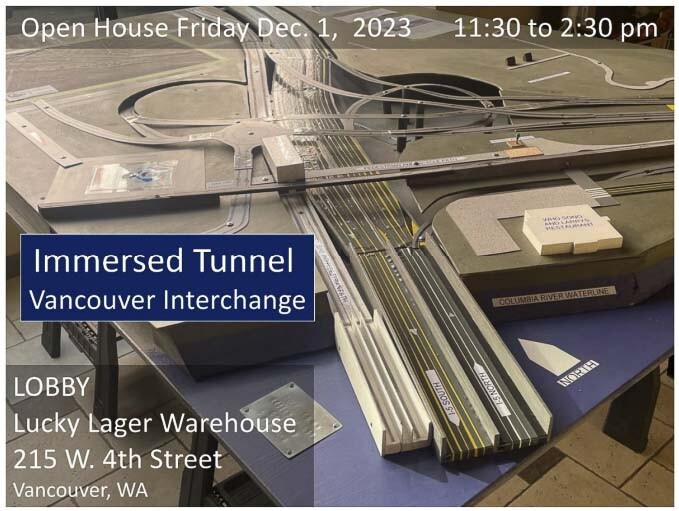
To illuminate reality, a model of the Vancouver interchange as it exits the water was constructed by Rowe. “The model makes it clear — the tunnel alternative offers superior connectivity to the mega-bridge option currently under design,” they say.
Ortblad has been an opponent of the $7.5-billion Interstate Bridge Replacement (IBR) proposal for crossing the Columbia River. He believes the proposed 4 percent grade will be too steep and cause safety issues, especially in icy winter conditions. Freezing occurs first on bridges above ground.
Some people are calculating 6-7 percent grades for the IBR’s SR-14 connection on and off ramps with Interstate 5. This would be even more unsafe, according to Ortblad, especially for freight haulers.
The solution? An immersed tube tunnel. Orblad has suggested this option almost from the beginning of the IBR program. He believes it can be built in half the time, and for much less than the $7.5-billion price tag of the current proposal by Administrator Greg Johnson and his IBR team.
Johnson, the IBR’s program manager, recently told those in attendance at a C-TRAN citizen’s advisory group meeting that construction could take between 10 and 15 years, according to Rowe. That’s a huge contrast with most timelines on the IBR website showing things wrapped up by 2035, a decade after construction begins.
Early in the program, the IBR supposedly evaluated and then discarded numerous options for a crossing. They said a new third bridge didn’t satisfy the “purpose and need” that was created over a decade ago for the failed Columbia River Crossing (CRC). They also said neither Oregon nor Washington had a third bridge in their 20-year transportation plans.
The Johnson team nixed a tunnel as being too expensive. Additionally, they said it couldn’t connect with SR-14 in Vancouver after spending over $100,000 on a “tunnel concept assessment.” Ortblad and Wallis vehemently disagree.
The IBR team continued to move forward, pushing to replace a three-lane bridge with a new three-lane bridge that has a single additional auxiliary lane. Their proposal fails to improve travel times or reduce expected traffic congestion. The IBR reports morning travel times will double, taking 60 minutes to go from Salmon Creek to the Fremont Bridge. Furthermore, half of rush hour traffic will be going zero to 20 miles per hour.
Members of the IBR team are currently fighting the US Coast Guard (USCG), which prefers a crossing with “unlimited” clearance for marine traffic. The USCG says a replacement must provide at least the current 178 feet of clearance.
When Ortblad offered data showing an immersed tube tunnel was much cheaper and could be built much faster, with minimal disruption to the maritime industry, the IBR team basically tried to ignore him. But Ortblad persisted with more examples. There is currently an eight-lane, toll free immersed tube tunnel being built in Vancouver, BC; and another one in Rotterdam, The Netherlands. Gothenburg, Sweden recently completed their second immersed tube tunnel.
“Is the IBR team dishonest or incompetent,” Ortblad asked earlier this year. He questioned the “unstamped” engineering work of the IBRs evaluation which indicated 8 million cubic yards of material needed to be excavated from the Columbia River bottom to hold an immersed tube tunnel. Ortblad’s calculation was only one quarter of that amount; just 2.1 million cubic yards.
Ortblad’s rebuttal forced the IBR to reexamine its numbers. The team then issued an “update” this summer showing the original 8 million cubic yards was now reduced to 4 million cubic yards. This time the document contained an official engineering stamp. But Ortblad believes the correct number is very close to his original 2.1 million figure.
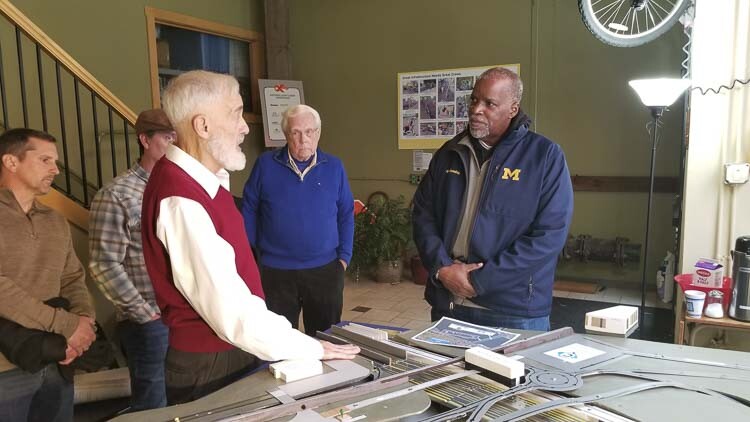
Enter Wallis and Rowe. Wallis spent an estimated 600 hours engineering an immersed tube tunnel calculation. The design includes connections on the Vancouver side of the river. He gave those to Rowe, a passionate train advocate who then went to work building a scaled model. Their work was displayed on Friday (Dec. 1) at the open house in the Lucky Lager Warehouse in downtown Vancouver..
A tunnel would not have to deal with snow and ice in the winter, and would therefore be safer for vehicles according to Ortblad. While both the IBR’s bridge and the tunnel have 4 percent grades, the tunnel would be safer because it won’t freeze up.
An immersed tube tunnel would allow unlimited clearance for maritime traffic on the river, pleasing the Coast Guard. Ortblad also pointed out that the lack of in-water piers to support the bridge would be better for fish and marine life.
Following a public records request, Ortblad received the IBR engineering calculations. “Every one of the 158 cross-section areas used to compute cubic yard volume is incorrect.” he said. “A realistic estimate is 2.1 million cubic yards.
“This massive error of 6 million cubic yards can only be explained by intentional deception,” Ortblad said. “Confronted with this error, after three weeks, the IBR pleaded incompetence. The IBR claims data was duplicated, and problems with third-party software, and quantity errors are common.”
Ortblad believed a dredging depth of only 45 feet was needed for an immersed tube tunnel, whereas the IBR said it required a depth of up to 82 feet. The IBR’s Johnson showed up to Friday’s open house and there was strong disagreement about the needed depth of a tunnel. Johnson believes it needs to be 100 feet below the surface of the water, whereas the retired engineers believe the bottom only needs to be about 50-60 feet. Water depth in the main channel is maintained about 27 feet by the Army Corps of Engineers.
Instead of spending hundreds of millions destroying and removing the two current bridges, Ortblad prefers to repurpose them. They would serve as a local connection between Vancouver, Hayden Island, and north Portland. Light rail or bus transit could use one of the bridges, along with pedestrians and bikes.
This would save roughly $200 -$300 million in costs, not including the cost of a transit station roughly 90 feet in the air over the waterfront in the IBR’s proposal. Sen. Lynda Wilson has questioned whether or not people will actually use a transit station that high above the ground. The tunnel model shows the transit station at ground level.
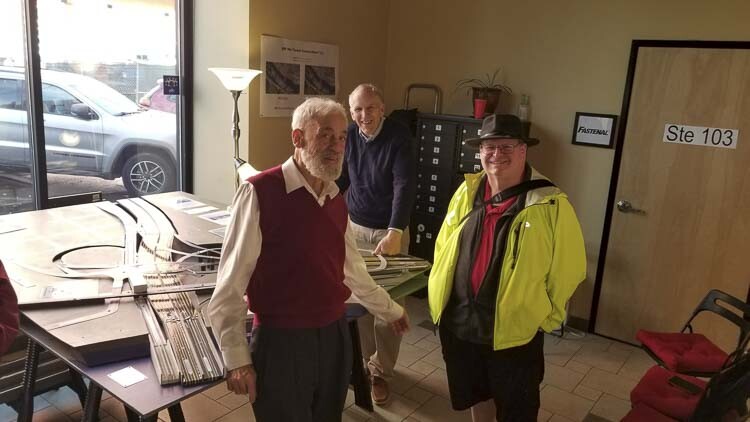
The increased vehicle capacity of the system would actually relieve traffic congestion if a tunnel was built and the bridges remained. The IBR reports that a significant number of vehicles enter and exit I-5 within the 5-mile “bridge influence area.” They would benefit from a local connection, not using the interstate.
Transportation architect Kevin Peterson has reported that the I-5 corridor will require five lanes in each direction by 2030 and seven lanes by 2045. He was using previous CRC travel demand data in his analysis. The current proposal will be four lanes shy of what is needed.
Residents of Hayden Island are extremely concerned about the huge footprint of the current IBR proposal. They have called for a new, third bridge to be constructed first, according to Martin Slapikas, a leader in the HiNoon Neighborhood Association. They feel Johnson’s team has ignored their concerns, while removing resident Tom Gentry from the Community Advisory Group a year ago because he asked too many penetrating questions.
The Federal Highway Administration (FHWA) and Federal Transit Administration (FTA) both require a legitimate evaluation of options prior to approving a project and providing federal funding. The IBR is seeking about $1.5 billion from the FHWA and another $1 billion from the FTA for the transit component of the project.
It remains to be seen if both agencies will accept what Ortblad deems is a hugely flawed analysis of an ITT option for the crossing.
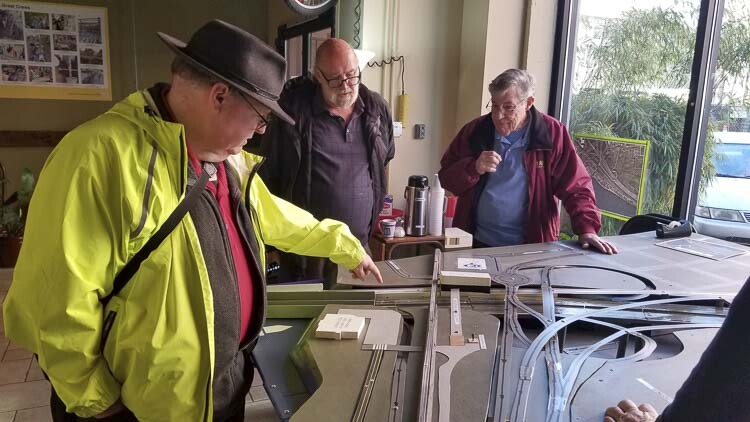
Also read:
- Delays expected on Northwest 99th Street during water quality project constructionClark County will begin construction in July to install a stormwater filter vault on NW 99th Street. Drivers can expect delays, but lanes will remain open during the work.
- POLL: What’s the biggest concern you have with the current I-5 Bridge replacement plan?As costs rise and Oregon’s funding fails, concerns mount over the current I-5 Bridge replacement plan. Clark County Today asks readers: what’s your biggest concern?
- Plan ahead for ramp closures on I-5 near Ridgefield, July 8-9Travelers on northbound I-5 near Ridgefield should prepare for ramp closures July 8–9 as WSDOT crews conduct final testing of new wrong-way driving detection systems. The closures affect exits 9 and 11, including the Gee Creek Rest Area.
- Oregon DOT director calls transportation funding bill failure ‘shocking,’ warns of layoffsODOT Director Kris Strickler warned staff that up to 700 layoffs are imminent after lawmakers failed to pass a transportation funding bill, deepening the agency’s $300 million shortfall.
- New crossing opens over SR 500 in VancouverWSDOT has opened a new pedestrian and bike bridge over SR 500 in Vancouver, restoring direct and ADA-accessible access for people walking, biking, or rolling.









